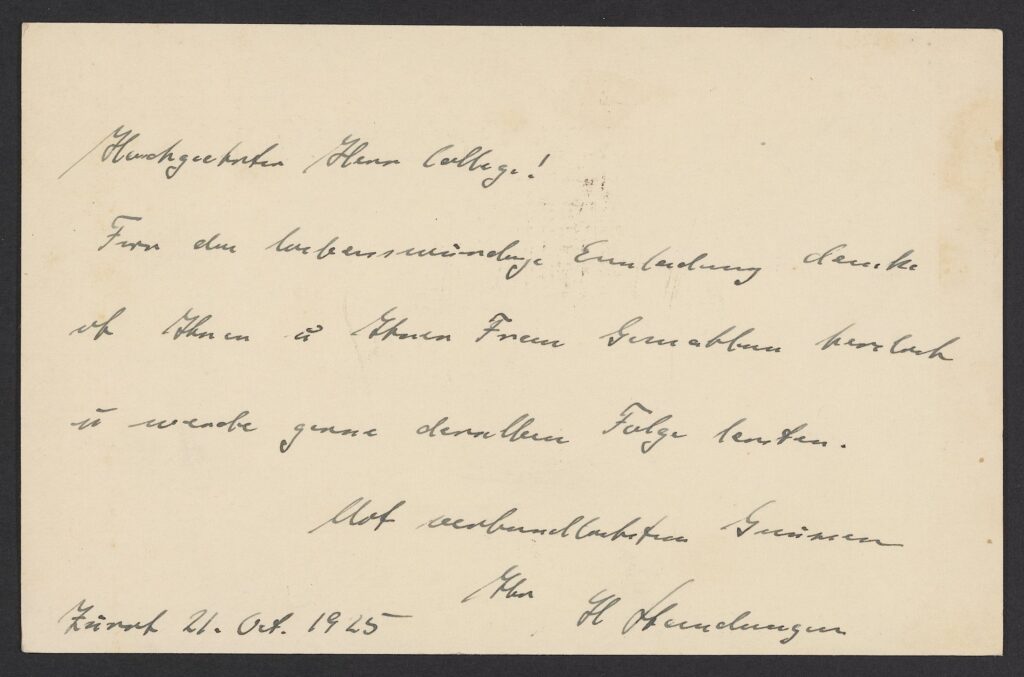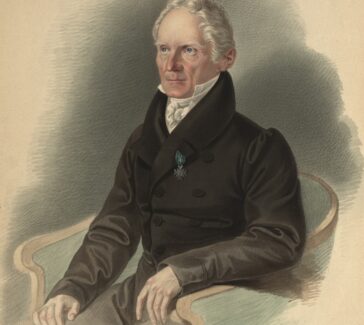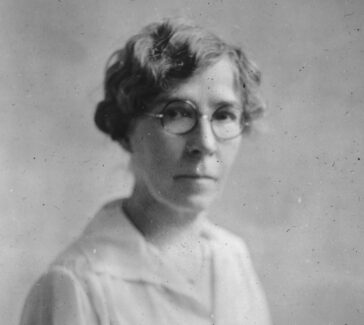Hermann Staudinger
In the early 1920s, Staudinger formulated a macromolecular theory of polymers, for which he later received the Nobel Prize in Chemistry.

Hermann Staudinger’s macromolecular theory of polymers eventually superseded the reigning aggregate theory. He was awarded the Nobel Prize in Chemistry in 1953 for his discoveries in the field of macromolecular chemistry.
Born in Worms, Germany, Staudinger (1881–1965) owed much of his political outlook to his father, a philosophy professor with socialist and pacifist leanings—views that seriously affected young Staudinger’s scientific career. He studied chemistry, originally in preparation for a career as a botanist, at the universities of Darmstadt, Munich, and Halle, where he received his PhD.
At Odds with Germany
By the outbreak of World War I, Staudinger was a professor of chemistry at the Eidgenössische Technische Hochschule in Zurich, Switzerland. From neutral Switzerland he openly criticized his native country’s involvement in the war, and he directly challenged his fellow countryman and chemist Fritz Haber on his role in gas warfare.
Macromolecular Theory of Polymers
Meanwhile Staudinger was beginning a line of chemical research into natural and synthetic polymers. The reigning theory was that all chemical compounds were entities of low molecular weight that sometimes “aggregated” to display characteristics like those found in the polymers rubber and polystyrene. In the early 1920s Staudinger published a series of papers on his new theory, presenting chemical evidence that such compounds were actually covalently bonded molecules of high molecular weight formed by the linking together of smaller molecules. Polymers were, as he termed them, “macromolecules.” But the world of chemistry took a long time to agree with him.
Aggregate vs. Macromolecular Theory

In 1926 he returned to Germany to take a position at the University of Freiburg in Breisgau. In the process of obtaining this position he largely renounced his opposition to gas warfare, but it continued to dog his professional life. A few months later a debate that became famous took place in a special symposium, orchestrated by Haber at the meeting of German Natural Scientists and Physicians in Düsseldorf, between the proponents of the aggregate theory of polymers and supporters of the macromolecular theory.
A presentation by Herman Mark of problematic X-ray crystallographic evidence of the structures of various natural polymers suggested that such macromolecules might exist but not that they did exist. At the end of the symposium there was still no consensus. Shortly thereafter, Mark’s completed mathematical calculations were more confirming of Staudinger’s macromolecules, although the two men were soon to disagree on more detailed structural matters.
The Swedish chemist Thé Svedberg’s ultracentrifuge spinning samples at 100,000 times the force of gravity gave further evidence of the high molecular weights of polymers such as hemoglobin. And Wallace Carothers’s work creating various synthetic polymers at DuPont gave further credence to the macromolecular hypothesis.
Vindication and the Nobel Prize
During World War II, Staudinger’s political past as an alleged enemy of the German nation haunted him. While many of his colleagues and students were forced to leave Germany due to the Nazi laws against Jews, Staudinger chose to stay to pursue his research, but he was ostracized by professional organizations and denied funds to purchase instruments like the ultracentrifuge.
Toward the end of his active life Staudinger turned to the study of biological macromolecules, or biomolecules. In 1953 he was awarded the Nobel Prize in Chemistry, 30 years after his pioneering work in polymers.



